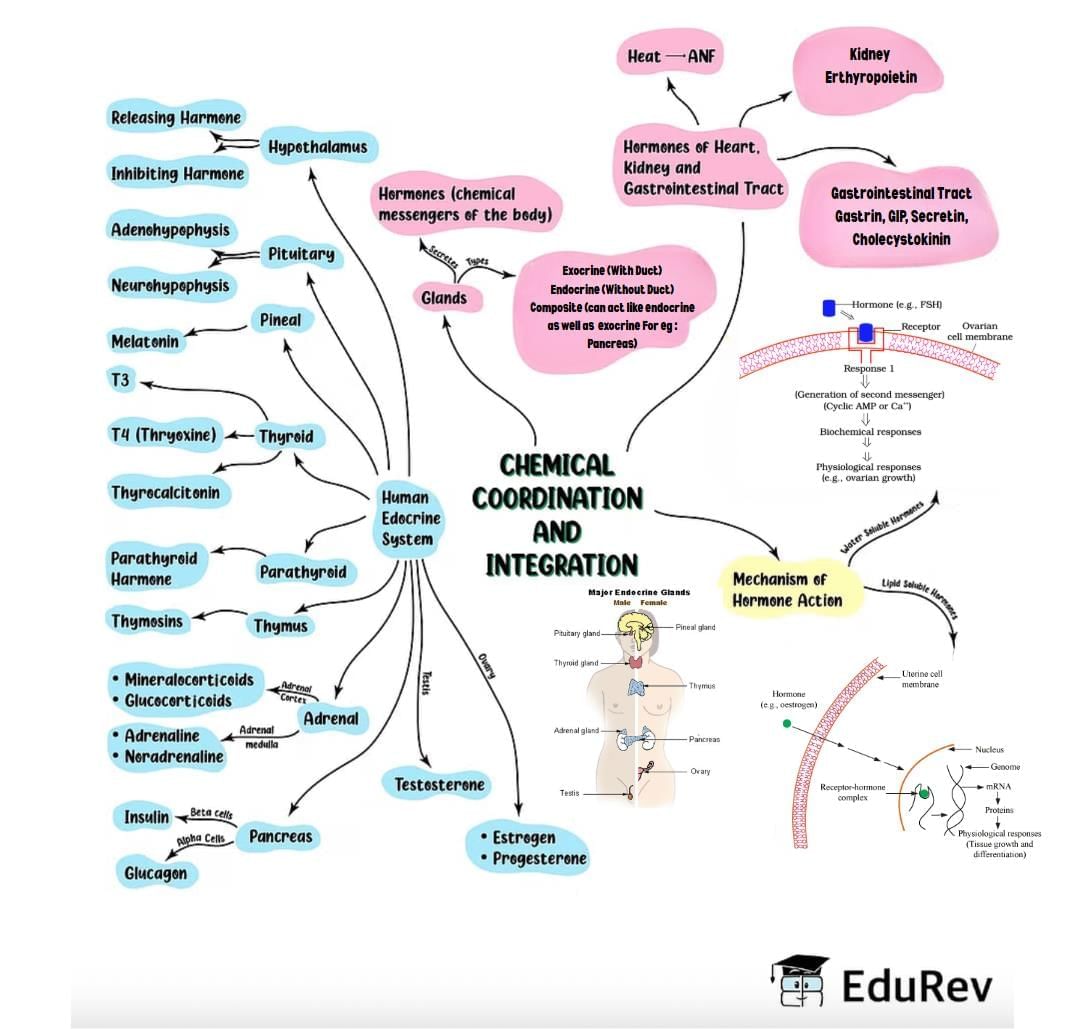NEET Exam > NEET Notes > Biology Class 11 > Mind Map: Chemical Coordination & Integration
Mind Map: Chemical Coordination & Integration | Biology Class 11 - NEET PDF Download

The document Mind Map: Chemical Coordination & Integration | Biology Class 11 - NEET is a part of the NEET Course Biology Class 11.
All you need of NEET at this link: NEET
|
150 videos|398 docs|136 tests
|
FAQs on Mind Map: Chemical Coordination & Integration - Biology Class 11 - NEET
| 1. What is chemical coordination and integration? |  |
Ans. Chemical coordination and integration refer to the regulation and communication between different organs and tissues in the body through the release and response to chemical signals. These signals, known as hormones, are secreted by specialized cells and travel through the bloodstream to target cells or organs, where they exert their effects.
| 2. How does the endocrine system work in chemical coordination and integration? |  |
Ans. The endocrine system is responsible for chemical coordination and integration in the body. It consists of glands that secrete hormones directly into the bloodstream. These hormones then travel to target cells or organs, where they bind to specific receptors and initiate a response. The endocrine system helps regulate various physiological processes such as growth, metabolism, reproduction, and stress response.
| 3. What are some examples of hormones involved in chemical coordination and integration? |  |
Ans. There are several hormones involved in chemical coordination and integration. Some examples include insulin, which regulates blood sugar levels, thyroid hormones that control metabolism, adrenaline that prepares the body for "fight or flight" response, estrogen and progesterone that regulate the female reproductive system, and testosterone that is important for male development and reproductive function.
| 4. How are hormones regulated in the body? |  |
Ans. Hormones are regulated through a complex feedback system in the body. When the concentration of a particular hormone rises, it signals the endocrine glands to reduce or stop its secretion. Conversely, when the hormone levels are low, the glands are stimulated to release more. This feedback mechanism helps maintain hormonal balance and ensure the proper functioning of various physiological processes.
| 5. What are the effects of hormonal imbalances in chemical coordination and integration? |  |
Ans. Hormonal imbalances can have various effects on the body. For example, an overproduction of insulin can lead to low blood sugar levels, causing symptoms like weakness and fatigue. Imbalances in thyroid hormones can result in weight gain or loss, mood swings, and changes in heart rate. Hormonal imbalances can also disrupt the menstrual cycle, affect fertility, and contribute to conditions like diabetes, polycystic ovary syndrome (PCOS), and hypothyroidism. Treatment options vary depending on the specific hormone involved and may include medications, lifestyle changes, or hormone replacement therapy.
Related Searches

















